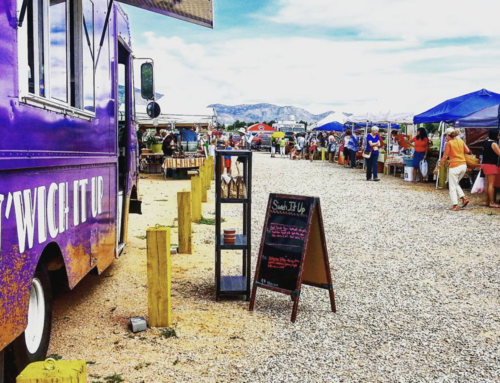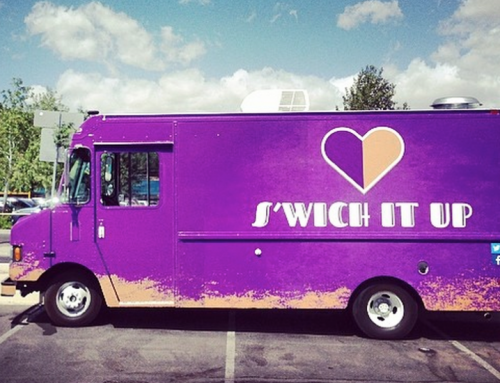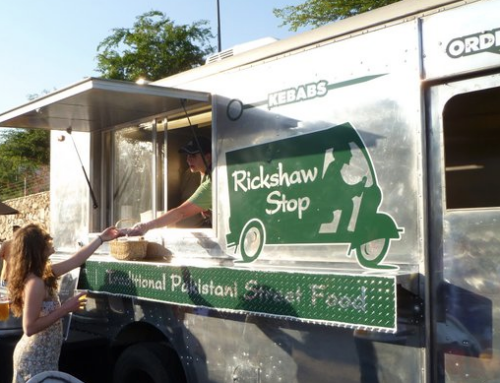Podcast: Play in new window | Download | Embed
Subscribe: RSS
Planning to conduct a SWOT analysis for your food truck business? That’s really smart! Going through the process of identifying your strengths, weaknesses, opportunities, and threats (SWOT) will help you be more prepared for the realities of operating a mobile food unit.
The SWOT analysis offers a deeper understanding of what makes you different locally and how you’ll specifically address shortcomings of the business. While it’s impossible to foresee every possible downturn that could happen in a food truck business, completing this template will have you more prepared for what’s to come.
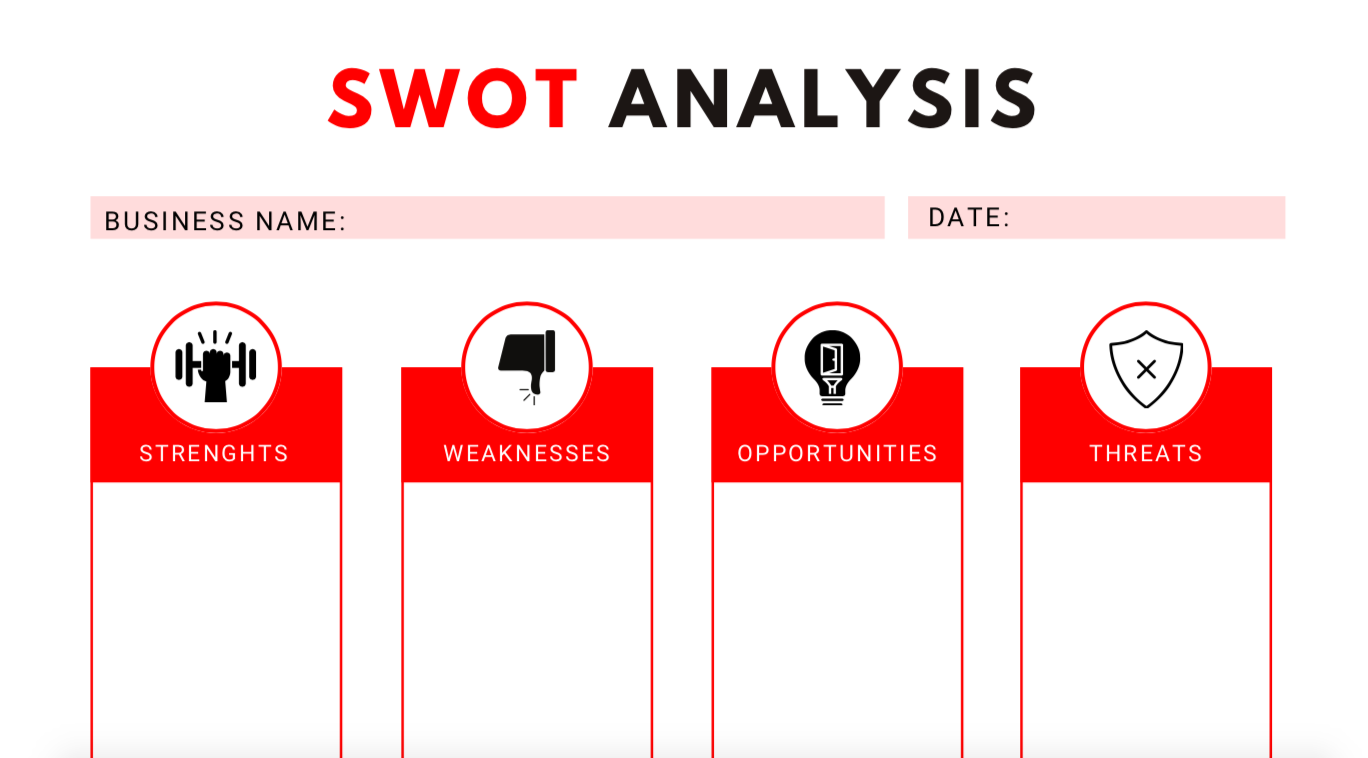
SWOT analysis for a food truck.
In today’s audio lesson, I’ll explain how to write a SWOT analysis in addition to providing examples of strengths and weaknesses of food truck businesses. Today’s episode is brought to you by our awesome sponsor that can help manage your payroll for a food truck or restaurant, Gusto. If you’d like to download the SWOT analysis template in PDF or PowerPoint right away, click on the navigation below.
Strengths
Here’s an example list of advantages for most food truck businesses.
Mobile: You aren’t stuck in one location or forced to sign a long term lease. This is one of the biggest advantages of operating a food truck or trailer. If you sign a lease, the demographics or economy of the area could decline in the coming years. This business model allows you to follow the money.
More Flexibility: If you don’t want to work one day, you can more easily take the day off with a food truck. If you find out Wednesdays are not profitable days to be in business, you don’t need to work that day. If you own a restaurant, you’ll be obligated to be open for business 6 or 7 days a week in most cases.
Lower Startup Cost and Financial Risk: To open a small restaurant it’s not uncommon to require $250,000 – $1 million in capital. That’s simply not a realistic amount of money for everyone to get their hands on. Food trucks and trailers on the other hand can be started for less than $100,000 even after factoring the cost of permits, licenses, initial inventory and equipment.
Marketing: Food trucks are basically rolling billboards for the business. If you’re out and about participating in festivals, fairs, and corporate events, people will get to know your business. The more visible you are in public, the more opportunities for catering gigs and other opportunities will come your way.
Weaknesses
.jpeg)
Evaluate the weakness of your business.
Here are some of the top challenges facing this type of business. I also suggest steps you can take to combat these weaknesses.
Mechanical Break Downs: Just like your automobile, a food truck requires regular maintenance and will need to be repaired. Make sure you have a reliable mechanic on call in case of break downs.
Limited Volume of Sales: One challenge operating a food truck is that you have a limited amount of storage and refrigerator space. That means if you have a busy lunch service and run out of food, you’ll miss out on potential sales. One way to counteract this problem is to have a “runner” on call who can get you more supplies when needed. Have someone on call before your biggest events of the year.
No Fixed Location / Schedule: One benefit of a brick-and-mortar restaurant is the fact diners know where to find you and when you’re open. In other words, when people are hungry they know exactly where to get ahold of you. Since most food trucks operate at different locations each week, it can be more difficult to build up a loyal customer base that turns into repeat sales.
Opportunities
Here are a few examples of opportunities many food truck vendors could take advantage of to improve their business operations.
Increase Speed: If you reduce the amount of time it takes to serve a customer on average you’ll make more money. Big restaurant chains like Chipotle and McDonald’s are obsessed with cutting drive-thru wait times because it means more transactions. Simple ways to improve your speed would be to reduce the number of complex menu items on your food truck and find ways to prep or preheat ingredients. You could also add contactless payment options through a point-of-sale system to reduce friction while paying.
Related Reading: The Complete Breakdown of Food Truck Operation Costs
Source New Suppliers: You never want to end up beholden to a single supplier for meats, buns, or anything else. Always make sure you’ve got a backup list of suppliers for all of your ingredients to ensure you’re ready to vend even if someone goes out of business, decides not to carry a key ingredient any longer, or raises prices.
Improve Marketing: One opportunity is to have better marketing than other local food trucks on social media websites like Instagram. In most markets, you could easily have better food photos than your competition with nothing more than a modern version of the iPhone. With any down time on the truck, take advantage of the break to create promotional content about your business.
Threats
Here are some threats to the profitability of any food truck business.
Accidents: An accident on the road is a real hazard for this type of business. Every time you take your food truck out on the road and vend there is a certain amount of risk you accept. To protect against real business danger, make sure you have good insurance and drive safely.
Vending Locations: There are all sorts of reasons a once profitable vending location could become unprofitable. There could be law changes that prevent from vending or new ownership could take over a food truck pod and increases the monthly rent too much. Whatever the catalyst, you need to be constantly looking for new vending locations. You never want to be reliant on a single location to operate a successful business.
In-Depth Podcast Series: The Ultimate Food Truck Case Study
Cost of Doing Business: Sometimes that cost of doing business will increase in an unexpected way. Suddenly gas prices might rise due to a global crisis in the Middle East. There could be a beef shortage that sends sirloin cost sky high. In situations like this you need to be mentally flexible and ready to adapt your food truck menu at a moments notice to remain profitable.
Download Food Truck SWOT Analysis Template
Download the food truck SWOT analysis document in PDF below. You can print off or download this template to input your own strengths, weaknesses, opportunities, and threats into the corresponding box.
The Final Word
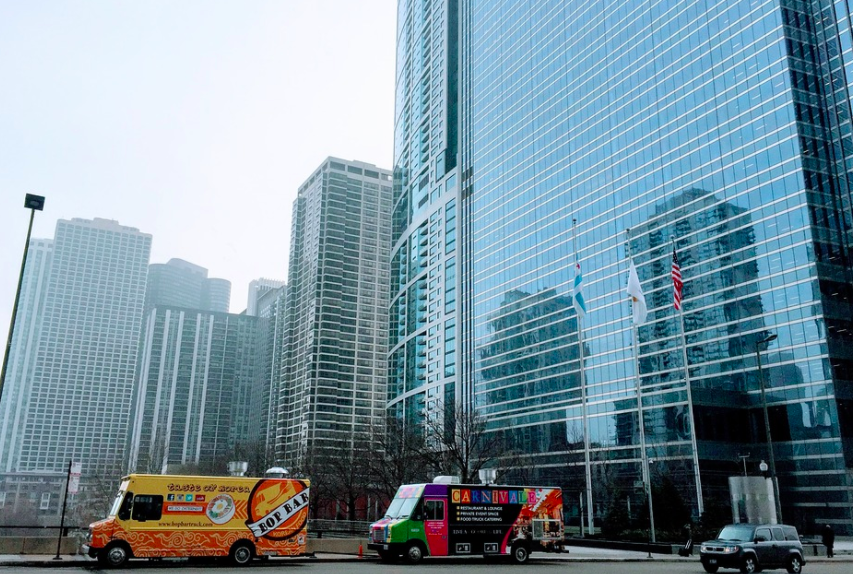
Two food trucks in Chicago.
Keep in mind that there are internal and external threats to your business. Internal threats are the hazards you have the most control over. One example of this is making sure the food truck is maintained on a regular basis with oil changes. This simple action will help prevent future mechanical failures.
The external threats can be harder to identify and prepare for. As an example, in certain markets food trucks were required to shut down temporarily due to national lockdowns and government restrictions. Additionally, almost all of the fairs and festivals where food truck vendors make the most of the money were canceled or postponed. This is an an example of an external factor that can stop a business in its tracks.
If you’re starting a mobile food business, don’t forget to download our Food Truck Business Kit. This free resource gives you immediate access to our 20-page business plan and cost analysis spreadsheet.

